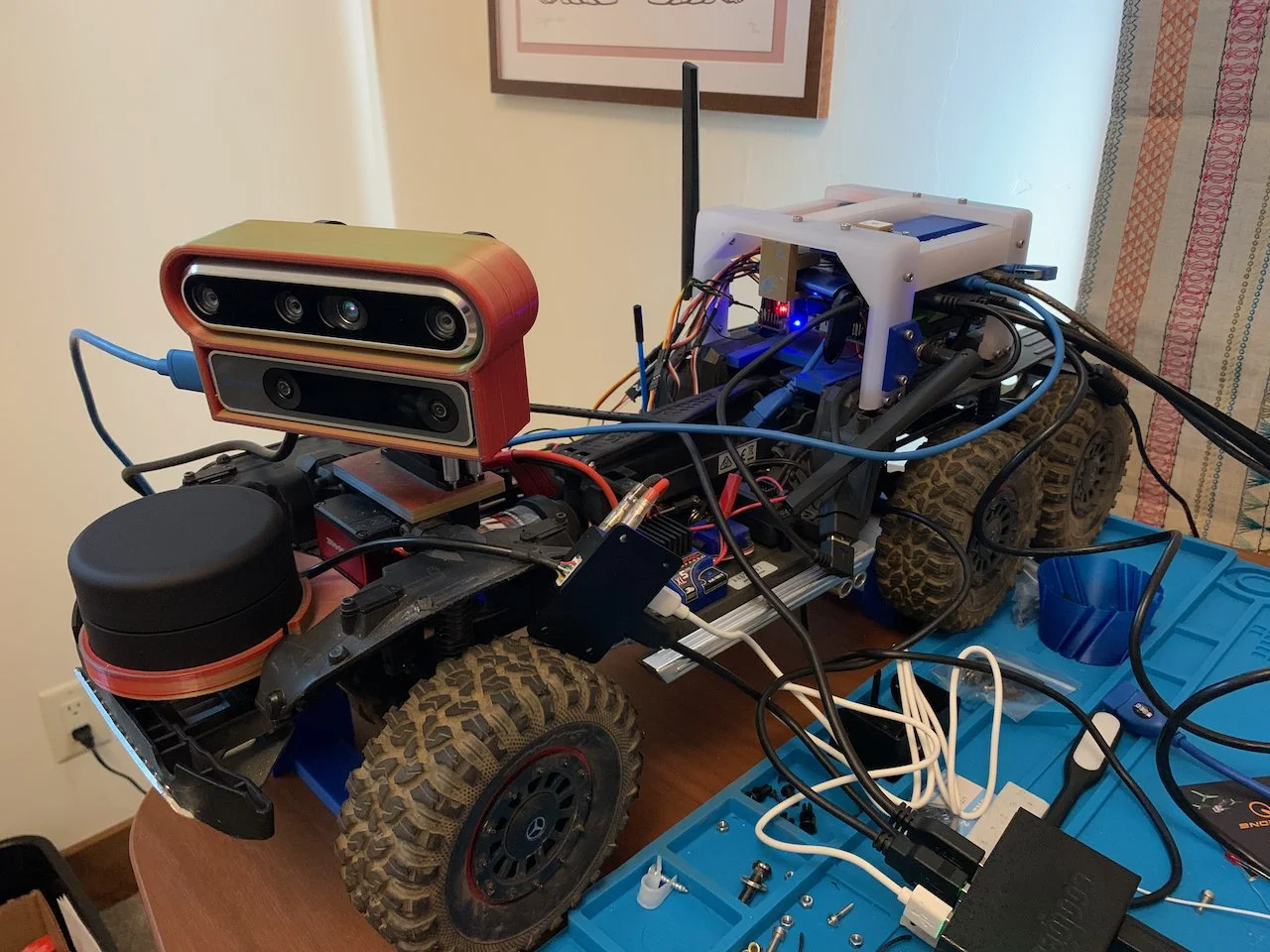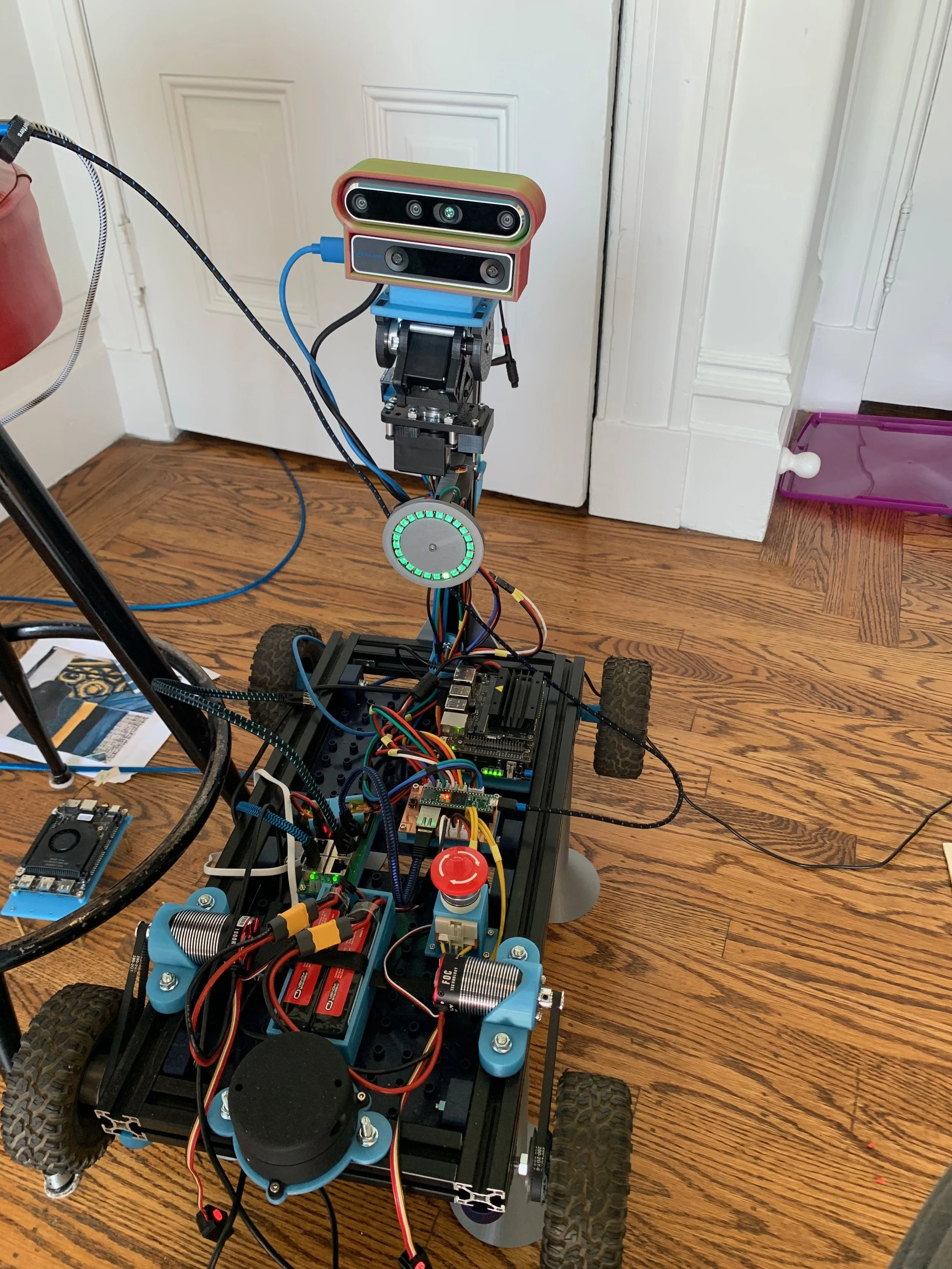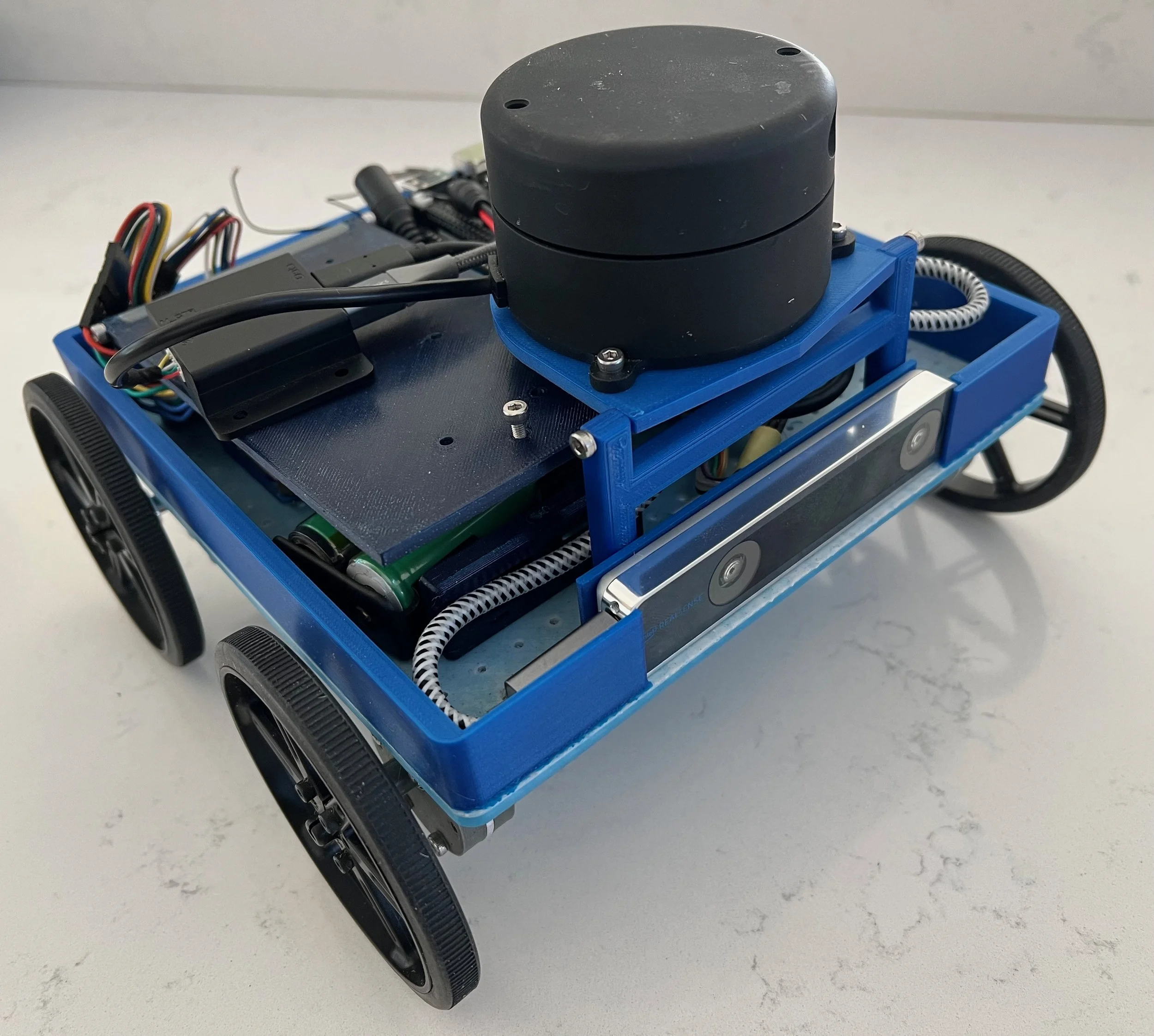
Robots for the Forest
California and the West is experiencing regular and catastrophic wildfire that is only getting worse every year. This is caused by the climate crisis and a century of fire prevention that has left our forests overgrown, dry, and sick. The solution is simple but hard to implement: Thin out the small diameter material in the forests. Large diameter trees are more fire resistant and with fewer small diameter material left behind to burn hot and fast, wildfire is less likely to be catastrophic.
Forest work is very hard and expensive. We need a solution to forest thinning that can scale quickly. Could robotics be part of the solution? Is there anything cooler than a robot armed with a chainsaw? I’d like to try and find out.
LEARN MORE
Treespotte 1
When I started working on Robotics I had a lot to learn: Electronics, 3D modeling, machine learning, the theory of Robotics, fabrication. Perhaps not surprising, Treespotte 1 was a bit of a failure but I learned a lot along the way.
Going into it, I thought it would be easier to start by building on an RC Car Chassis. If I was further along with my understanding of robotics this might have been a reasonable choice, but I started running into issues. The footprint was limited which meant I didn’t have a lot of places to mount hardware. RC cars use Ackerman steering which is more complicated than differential steering. RC motors use an ESC instead of a motor controller, which means I wouldn’t have access to wheel encoder data. I also ran into a lot of issues getting Intel RealSense cameras to play nice with the Jetson Nano SBC (I’m hopeful this is more mature now). I ultimately concluded that it made more sense to start over with a new chassis.
Treespotte 2
Let’s call this one overdone. I wanted to create plenty of space for hardware and this ended up causing way too many issues. I tried to cram too much on this one: For compute, I included a Jetson Nano, Latte Panda Alpha, and a Teensy Microcontroller on a home etched PCB board all networked together. I (incorrectly) thought I needed all this computing power but instead ended up with a complicated mess. I was still using RC motors, though slightly simplified with a built in ESC. In addition to this being overly complex, this thing was heavy which meant that the differential drive wasn’t able to turn the robot. Lessons learned: Start simple and stick with a single computer
Treespotte 3
For this one, I set a less ambitious goal of having a robot that could navigate indoors and I’m calling this one a success. The good news is that my learnings from the previous failures meant I was able to turn around a new design much faster. TS3 is simpler with just the Latte Panda for compute, an Intel T265 Tracking camera, Lidar, and a RoboClaw motor controller that can do wheel odometry. I may add in a GPS to start doing experiments with outdoor navigation. TS3 can successfully map a room and navigate to goal poses without input from me. I had to fork an old ROS1 driver so that I could get the Roboclaw Motor Controller working with ROS2. I designed the chassis in Fusion 360 and 3D printed many of the parts.
Treespotte 4
The goal of Treespotte 4 is to build a robot that can navigate outside by itself and identify objects around it such as pine cones, trees, etc. Because Intel is no longer selling the T265, I’ve designed this version to use the ZED 2i stereo depth camera and utilize GPS to help with navigation. I designed this tracked robot using Fusion 360 and 3D printed all the parts in PLA. The brain is a Jetson AGX Orin Developer Kit. The chassis is largely complete as of April 2022 and I’m taking a break before I start back to work implementing ROS2.






